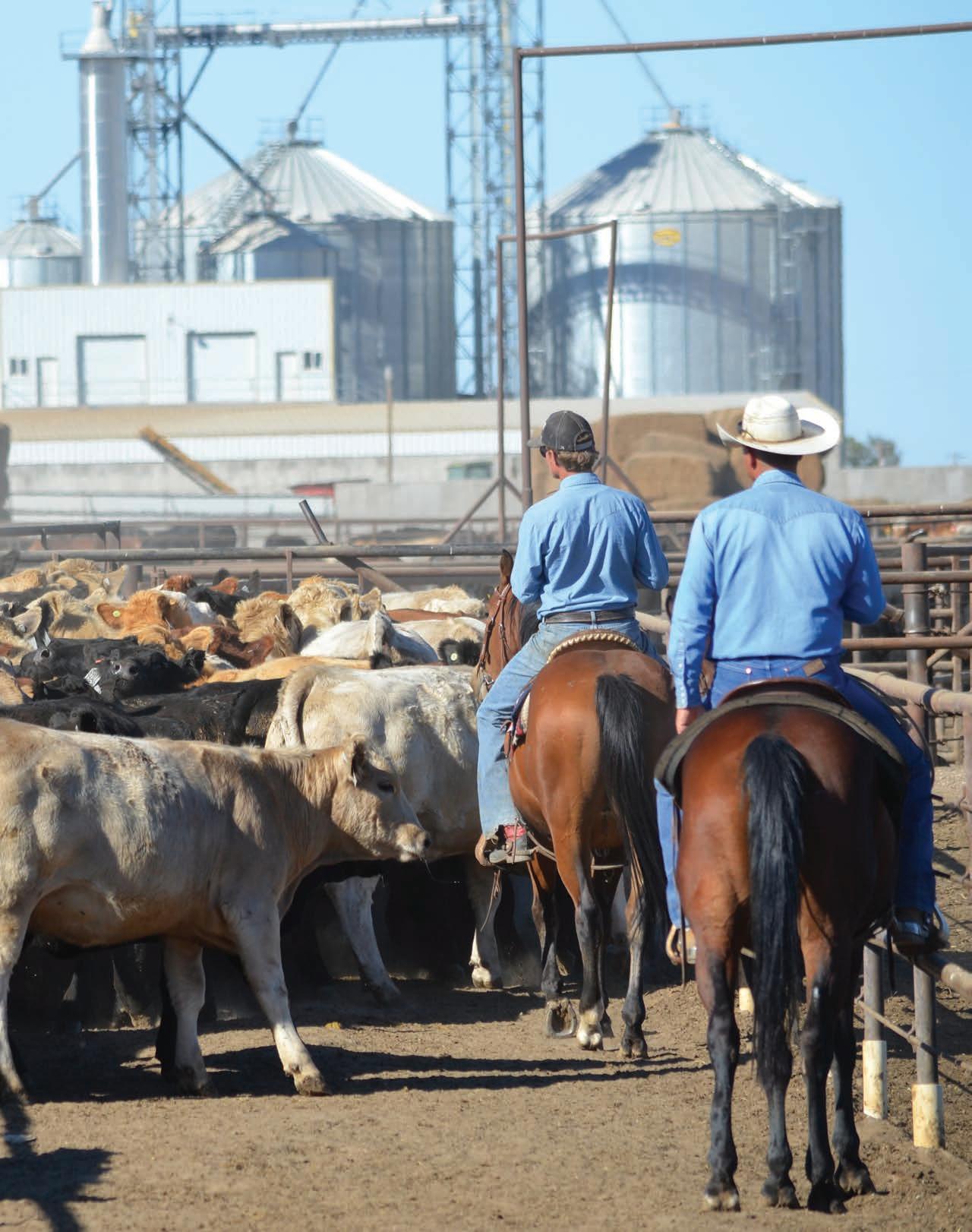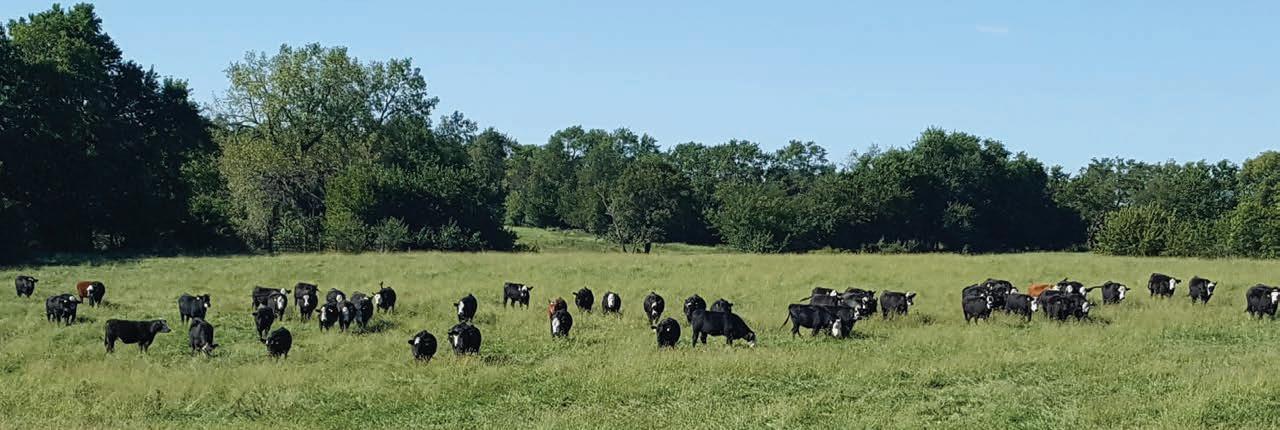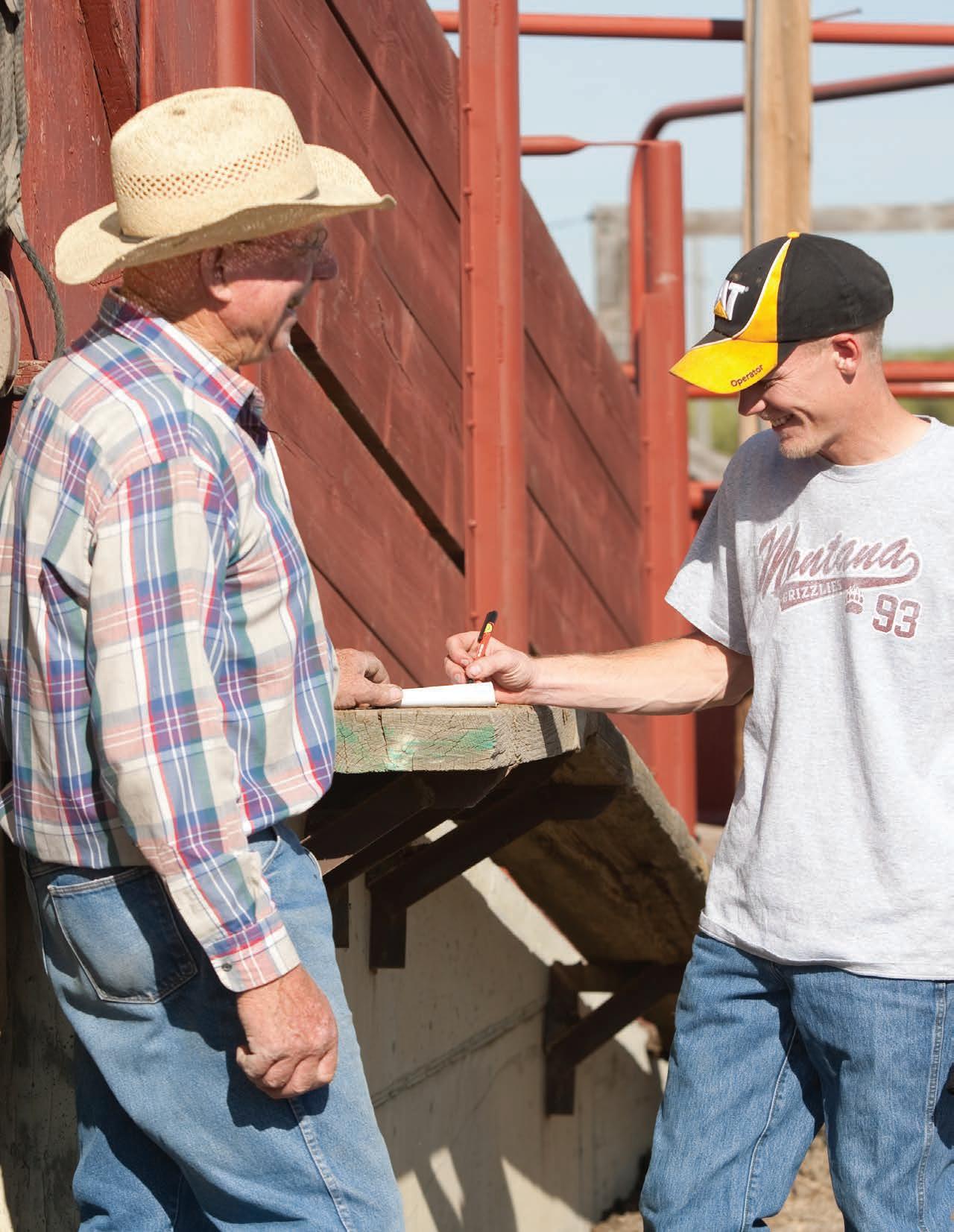
4 minute read
Chapter 1 — Introduction to Transport
CHAPTER 1.
INTRODUCTION TO TRANSPORT
CHAPTER 1.1
INTRODUCTION
Beef Quality Assurance — Transportation (BQAT) plays a critical role in beef and dairy industries and can impact the health and welfare of cattle. Proper handling and transport of cattle can reduce sickness in calves, prevent bruising, and improve the quality of the meat from these animals. Transportation can be one of the most stressful events for livestock animals. However, when transporting in a safe and low-stress manner, you make the animals’ well-being and human safety a top priority. This manual will present concepts to help you take every step possible to keep cattle as healthy and safe as possible when in transport.
Cattle transportation occurs at several junctures throughout the production process. During transport, it is essential to take animal well-being and human safety into account. Improper animal care and treatment will have a negative effect on meat quality. A reduction in meat quality impacts the consumer, the production operation, and the trucking business by reducing demand and therefore financial opportunities. These are all reasons why careful transportation of animals is important.
Cattle transport is a team event. It takes effective communication between all individuals involved. Having consistent and appropriate communication about safe transportation practices and planning facilitates successful implementation of these practices. The goal is to reduce potential harm to the people and cattle involved, to ensure a quality product, and to make consumers aware of the important role cattle transporters play in the cattle industry.
1.2 Overview of Key Practices
It is not acceptable to knowingly inflict physical injury or unnecessary pain on cattle when loading, unloading, or transporting animals.
Handle/transport all cattle in a manner to minimize stress, injury, and bruising.
When transporting cattle, use vehicles that provide for the safety of personnel and cattle during the loading, transporting, and unloading processes.
Follow these guidelines when transporting livestock: • Do a structural check of trailer/truck and tires prior to loading livestock. • Inspect trailer/truck for cleanliness (biosecurity awareness) as well as condition of flooring and broken gates that may injure/bruise cattle. • Check weather and route, including construction or potential road hazards/delays, to ensure a safe and uneventful trip. • Verify drug withdrawal times on any animals being sold. • Verify all animals are able to withstand the rigors of transport. • Back up squarely and evenly to the loading chute. • Load animals using low-stress handling practices. • Pull away from the chute slowly and drive smoothly to allow cattle a chance to gain their balance during transit. • Minimize time in transit by limiting stops and using prior preparation to ensure an organized event. Follow these guidelines when contracting for your livestock to be hauled: • Establish good communication/logistics with both the trucking company and the receiver of the livestock. • Request that the truck arrive clean for loading to decrease biosecurity risks. • Ask hauling contractor/driver for proof of BQA Transportation
Certification.

1.3 PRINCIPLES OF BQA
Welcome to doing things the right way — the BQA way. Each aspect of the BQA program is economically logical and part of good business management. This responsible management approach can bring positive benefits to the cattle producer and transporter. To see how BQA sets the standard for proper management techniques in the beef industry, visit our website at BQA.org.

BQAT CERTIFICATION
The BQAT program for cattle transporters is part of BQA. To register to become BQAT certified, visit BQA.org. To learn about in-person training opportunities, contact your BQA state coordinator. Below are the BQAT certification options.
CERTIFICATION OPTIONS:
BQAT Certification for the Professional Driver and Farmer and Rancher: » Learn the principles of transporting cattle in commercial and/or private trailers such as gooseneck trailers or other trailer types that could impact animal well-being and meat quality, as well as the financial impacts they have on the cattle industry. By using best practices, transporters can save the cattle industry millions of dollars each year. When a transporter participates in the program, they are showing consumers they are ready to take every step possible to keep cattle as healthy and safe as possible. See the key points highlighted in the transportation certification.
KEY POINTS:
The program covers many topics including: » Cattle handling guidelines and diagrams » Checklists for loading/unloading » Checklists for extreme weather conditions » Checklists for fit/injured/weak cattle » Checklists for traveling » Loading suggestions » Biosecurity and emergency action plans
BQA CERTIFICATION
The BQA program is a voluntary program involving “basic training” in BQA followed by an exam. Training certification continues in communities across the U.S. with the assistance of qualified local individuals, such as veterinarians and extension educators who have completed the BQA certification and training. To learn more about becoming a BQA-certified trainer, visit BQA.org. To earn BQA certification, cattle producers must either complete BQA online (visit BQA.org) or attend a training event held by a state BQA coordinator. Both options require the passing of a quiz that relates to BQA Key Practices. Your BQA certification must be renewed once every three years. Following the completion of your BQA training and successful completion of the exam, you will receive a certificate of completion—an opportunity to proudly display your commitment to beef quality and animal well-being. Recertification generally requires completing the original BQA training and certification (whether online or via workshops in your state). Some states may offer continuing education opportunities that qualify for BQA recertification. Again, check BQA.org for recertification requirements in your state.






